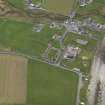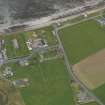Pricing Change
New pricing for orders of material from this site will come into place shortly. Charges for supply of digital images, digitisation on demand, prints and licensing will be altered.
Upcoming Maintenance
Please be advised that this website will undergo scheduled maintenance on the following dates:
Thursday, 9 January: 11:00 AM - 3:00 PM
Thursday, 23 January: 11:00 AM - 3:00 PM
Thursday, 30 January: 11:00 AM - 3:00 PM
During these times, some functionality such as image purchasing may be temporarily unavailable. We apologise for any inconvenience this may cause.
Birsay, Manse
Floor (Period Unassigned), Manse (Period Unassigned), Structure (Medieval)
Site Name Birsay, Manse
Classification Floor (Period Unassigned), Manse (Period Unassigned), Structure (Medieval)
Alternative Name(s) Third Manse, 1761
Canmore ID 196243
Site Number HY22NW 71
NGR HY 24784 27671
Datum OSGB36 - NGR
Permalink http://canmore.org.uk/site/196243
- Council Orkney Islands
- Parish Birsay And Harray
- Former Region Orkney Islands Area
- Former District Orkney
- Former County Orkney
Watching Brief (8 October 2018 - 10 October 2018)
HY 24787 27670 The removal of the existing Guild Hall flooring exposed the remains of a stone-built, apsidal structure. Parts of this structure had been truncated by the construction cuts for the Guild Hall's main walls indicating it pre-dated the latter's construction in the eighteenth century. The apsidal structure was well-built, using dressed and set tabular flagstone, and was interpreted as being the remains of a substantial structure, probably representing the foundation courses of major structural elements such as walls. The apsidal shape in plan of this structure could possibly indicate an ecclesiastical building such as a church. No cultural artefacts were recovered from the Site during the archaeological monitoring, however, and so any interpretation must remain putative. The structure appeared to be built upon a compacted surface overlying a substantial layer of wind-blown sand. Small-scale archaeological excavations undertaken at various locations within Palace Village have shown a similar layer of wind-blown sand is present over a wide area of the village which, in some areas was seen to seal deposits and features potentially dating to the Viking/ Norse period. A partial flagstone surface was also identified to the west of the apsidal structure. No direct relationship between the apsidal structure and the flagstone surface could be identified, however, the surface has been putatively interpreted as a floor surface within the building of which the apsidal structure is a part. The exposed remains have been left in-situ to be covered by a new levelling layer and a concrete floor.
Pete Higgins - Orkney Research Centre for Archaeology














